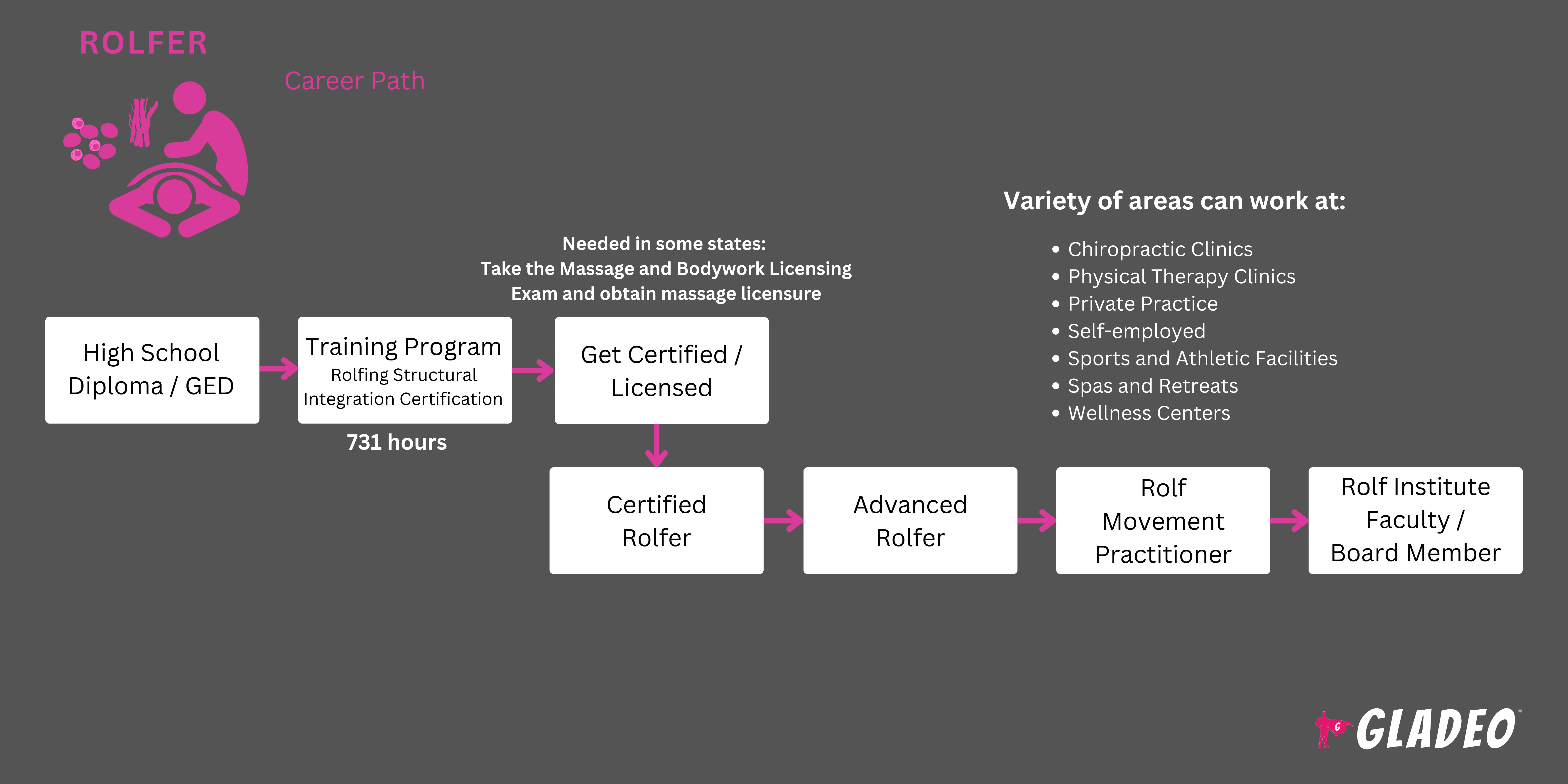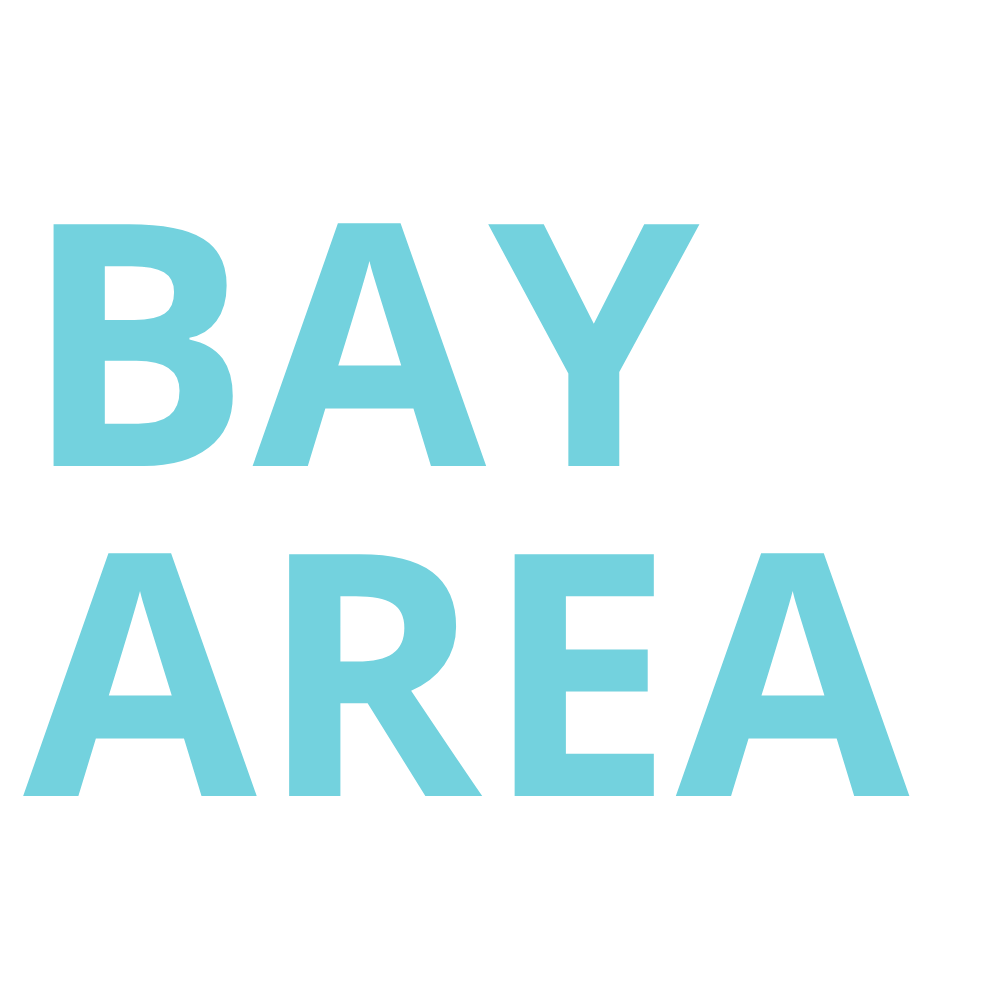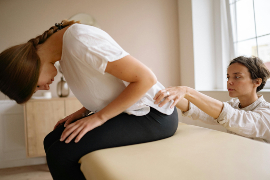Mga spotlight
Massage Therapist, Physical Therapist, Chiropractor, Myofascial Release Therapist, Craniosacral Therapist
Naisip mo na ba kung ano ang humahawak sa ating mga kalamnan, buto, nerbiyos, at mga organo sa lugar? Sa ilalim ng ating balat at tumatakbo sa buong katawan natin ay mga patong ng mala-sapot na nag-uugnay na tisyu na tinatawag na fascia . Ang network na ito ng fascia ay nagbibigay ng suporta sa istruktura na nagpapahintulot sa iba't ibang bahagi ng ating katawan na gumana bilang isang pinagsamang kabuuan.
Dahil magkakaugnay ang fascia, ang anumang mga pinsala o paghihigpit sa isang bahagi ay maaaring makaapekto sa ibang bahagi ng ating katawan. Maaari itong humantong sa mga sintomas tulad ng pananakit, paninigas, tensyon, at maling postura. Mayroong ilang mga paraan upang matugunan ang mga naturang sintomas, mula sa pag-unat at masahe hanggang sa physical therapy, mga gamot sa pananakit, at maging ang operasyon. Isa sa mga hindi gaanong kilalang opsyon ay ang pagbisita sa isang Rolfer!
Nagsasagawa si Rolfers ng isang uri ng deep tissue bodywork na tinatawag na Rolfing Structural Integration na nagmamanipula sa fascia upang itama ang mga pisikal na misalignment, ibalik ang elasticity, at palayain ang katawan mula sa discomfort. Sa panlabas, ang mga paggamot ay mukhang katulad ng massage therapy, ngunit ang Rolfing ay may mas malawak na pokus na higit pa sa pagrerelaks ng kalamnan at pag-alis ng stress.
Ipinangalan sa biochemist na si Dr. Ida Rolf, ang Rolfing ay sumikat nang husto simula nang itatag ito noong 1971. Simula noon, iba't ibang sistema ng sangay ang nabuo – ngunit ang tanging lugar sa US para sa pagsasanay at pagiging sertipikado sa orihinal na holistic na pamamaraan ng Rolfing ay sa Dr. Ida Rolf Institute (DIRI) sa Colorado!
- Pagbawas ng sakit ng mga kliyente at pagtulong sa kanila na makamit ang mas maayos na postura at kadaliang kumilos
- Pagpapabuti ng pangkalahatang kalidad ng buhay ng mga kliyente, lalo na para sa mga may malalang discomfort
- Pakikipagtulungan sa mga kliyente sa pangmatagalang kagalingan at kamalayan sa katawan
- Posibleng malaking kita, na may average na kita na $130–$160 kada oras
"Ang paggawa ng pagbabago sa buhay ng mga tao sa pamamagitan ng mas maayos na pakiramdam sa kanilang mga katawan. Para sa ilang mga tao, ito ay ginhawa mula sa pangmatagalang (talamak) na sakit. Para sa iba, pinahuhusay nito ang tiwala sa kanilang postura at imahe ng katawan. Ang pagtulong sa magkakaibang populasyon ng mga tao kung sino sila at kung paano nila ginagamit ang kanilang mga katawan ay lubos na kapaki-pakinabang!" - Matthew Hartman, Rolfer sa Structural Integration Bodywork
Oras ng trabaho
- Karaniwang nagtatrabaho nang full-time ang mga Rolfers, na maaaring kabilang ang 4 hanggang 6 na oras sa isang araw na nagbibigay ng direktang manual therapy sa mga kliyente. Maraming Rolfers ang self-employed o nagtatrabaho sa mga holistic health center, spa, o pribadong klinika. Ang mga nagpapatakbo ng sarili nilang negosyo ay gumugugol din ng oras sa pamamahala ng mga aktibidad na may kaugnayan sa negosyo.
Mga Karaniwang Tungkulin
- Mag-iskedyul ng unang sesyon kasama ang isang kliyente. Talakayin ang kanilang mga sintomas at suriin ang pisikal na pagkakahanay ng kanilang katawan.
- Tukuyin at tugunan ang mga bahagi ng katawan na may malalang pananakit, limitadong paggalaw, o pinsala.
- Gumawa ng plano para makatulong na maibsan ang mga sintomas ng kliyente at itama ang kanilang postura.
- Ipaliwanag kung ano ang dapat asahan ng kliyente sa kanilang mga sesyon.
- Tandaan, karaniwang iminumungkahi ng Rolfers na kumpletuhin ng mga kliyente ang isang 10-sesyon na kurso ng paggamot, na may mga regular na sesyon ng pagpapanatili, kung kinakailangan.
- Talakayin ang mga posibleng kontraindikasyon, kung mayroon man. Halimbawa, maaaring kailanganin ng isang Rolfer na maging mas maingat sa anumang bahagi ng katawan na sumailalim sa operasyon.
- Magsagawa ng hands-on manual therapy upang manipulahin ang fascia ng katawan. Subaybayan ang mga reaksyon ng kliyente sa therapy habang ginagawa ito. Hikayatin ang bukas na komunikasyon at feedback.
- Suriin ang postura at kadaliang kumilos ng kliyente pagkatapos ng bawat sesyon.
Mag-alok ng mga rekomendasyon para sa pangangalaga pagkatapos ng sesyon, tulad ng hydration, pahinga, o mga partikular na aktibidad na dapat iwasan. - Turuan ang kliyente tungkol sa body mechanics, mga pattern ng paggalaw, at mga paraan upang mapanatili ang mga pagbuti sa pagitan ng mga sesyon, tulad ng mga ehersisyo at pag-unat.
- Mag-book ng mga follow-up session, na naka-oras ayon sa plano ng paggamot ng kliyente.
- Magtala, makinig sa feedback ng kliyente, at subaybayan ang progreso.
- Gumawa ng mga pagsasaayos sa mga plano sa paggamot kung kinakailangan.
Karagdagang Pananagutan
- Panatilihing malinis at nakakakalmang kapaligiran ang paggamot. Panatilihing malinis at nasa maayos na kondisyon ang mga mesa ng masahe.
- Tulungan ang mga kliyente na maging panatag habang sila ay nag-aaral. Magbigay ng suportang pang-motibasyon sa mga kliyenteng nahihirapan sa pisikal na paghihirap.
- Sundin ang mga lokal at pambansang alituntunin para sa mga kasanayan sa bodywork.
- Manatiling updated sa mga bagong pag-unlad. Kumuha ng mga kurso sa patuloy na pag-aaral tungkol sa anatomiya, biomekanika, at mga pamamaraan ni Rolfing, kung makakatulong ito sa pagpapalawak ng kaalaman sa larangan ng karera.
- Para sa mga may sariling negosyo:
- Kumuha ng lisensya sa negosyo at umupa ng angkop na lugar ng trabaho.
- Magtayo ng isang nakakarelaks at pribadong lugar ng trabaho na walang mga distraksyon at ingay sa labas.
- I-brand at i-advertise ang negosyo. Itatag ang online presence ng negosyo sa pamamagitan ng website, Google Business profile, social media, at iba pang angkop na platform.
- Manatiling sumusunod sa mga pamantayan sa pag-aanunsyo ng kalusugan. Iwasan ang paggawa ng mga medikal na pahayag na may kaugnayan sa mga serbisyong inaalok. Isaalang-alang ang paglalarawan ng mga serbisyo sa mga tuntunin ng mga benepisyo tulad ng pinahusay na postura, pinahusay na saklaw ng paggalaw, at pinahusay na kamalayan sa katawan.
- Makipagtulungan sa mga chiropractor, physical therapist, at wellness practitioner para sa mga referral upang makabuo ng base ng kliyente.
- Bumuo ng isang mahusay na paraan para makapag-book ng mga appointment at makapagbayad ang mga kliyente.
- Bumuo at magpanatili ng magandang relasyon sa kliyente para sa paulit-ulit na negosyo.
Magpatupad ng mga paraan ng pagpapanatili ng kliyente, tulad ng mga follow-up na email, mga personalized na update sa paggamot, mga programa ng katapatan, o mga pag-check-in pagkatapos ng paggamot. - Umorder ng mga kagamitan, tulad ng mga massage oil, tuwalya, sanitizer, aromatherapy candles, o iba pang mga bagay para sa workspace.
- Kumuha ng insurance para sa pananagutan, propesyonal na bayad-pinsala, at saklaw ng ari-arian.
- Subaybayan ang kita at mga gastusin. Magsumite ng mga buwis ng estado at pederal.
Soft Skills
- Analitikal
- Pansin sa detalye
- Komunikasyon
- Koordinasyon
- Paggawa ng desisyon
- Empatiya
- Mga kasanayan sa interpersonal
- Mga kasanayan sa pagganyak
- Pagtugon sa suliranin
- Pamamahala ng oras
Teknikal na kasanayan
- Malakas na pag-unawa sa anatomiya, pisyolohiya, at biomekanika.
- Kaalaman sa mga pamamaraan at prinsipyo ng Rolfing sa manipulasyon ng fascia.
- Kakayahang masuri at itama ang mga postural imbalance.
- Kahusayan sa pag-obserba ng mga padron ng paggalaw at pisikal na pagkakahanay.
- Pamilyar sa mga holistic na kasanayan sa kalusugan at mga komplementaryong therapy.
- Pag-unawa sa pamamahala ng malalang sakit.
- Mga kasanayan sa pag-iingat ng rekord at dokumentasyon.
- Kahusayan, lakas, at tibay.
- Sa sarili nagtatrabaho
- Mga spa at wellness center
- Pribadong pagsasanay
- Mga pasilidad ng rehabilitasyon
- Mga klinika sa medisinang pampalakasan
Madalas na nakikipagtulungan si Rolfers sa mga kliyenteng dumaranas ng malalang sakit o mga problema sa paggalaw, kaya ang trabaho ay nangangailangan ng sapat na empatiya at pasensya. Bukod pa rito, ang Rolfing ay isang trabahong nangangailangan ng pisikal na pagsisikap, kaya dapat paunlarin at panatilihin ng mga Rolfers ang kanilang lakas at tibay upang magawa nang maayos ang trabaho.
Ang mga self-employed ay kailangang mangasiwa sa mga gawaing may kaugnayan sa negosyo tulad ng pagpapanatili ng angkop na workspace, pag-aanunsyo, pag-iiskedyul ng mga appointment, pagkuha ng mga bayad, pagtatala ng mga rekord sa pananalapi, at pagbabayad ng buwis. Maaaring mahirap makahanap ng sapat na kliyente sa simula, kaya kailangang manatili ang mga Rolfers dito at epektibong ibenta ang kanilang mga serbisyo.
Itinatampok ng mga kamakailang uso sa Rolfing ang lumalaking papel nito sa komplementaryong therapy, lalo na para sa mga malalang sakit at mga isyu sa paggalaw. Halimbawa, ipinapahiwatig ng pananaliksik na maaaring suportahan ng Rolfing ang mga pagpapabuti sa pamamahala ng malalang sakit sa mababang likod at paggana ng motor para sa spastic cerebral palsy .
Bukod pa rito, nagpapakita ng pangako ang Rolfing para sa pamamahala ng fibromyalgia , kung saan ang mga pag-aaral ay nagtala ng mga pagbawas sa sakit, pagkabalisa, at depresyon ilang buwan pagkatapos magamot. Itinatampok nito ang potensyal ng Rolfing bilang isang pangmatagalang mekanismo ng suporta para sa pamamahala ng mga sintomas.
"Napakaraming pananaliksik ang isinagawa tungkol sa fascia sa nakalipas na 15 taon – maraming bagong impormasyon ang natanggap ko simula nang magsanay ako sa Rolfing 21 taon na ang nakalilipas!"
Gusto kong makasabay sa pananaliksik na ito para maging edukado ako at maayos na maturuan ang aking mga kliyente. Ang Fascia ang pangunahing tisyu (kasama ang mga kalamnan, tendon, ligament, at laman-loob) na aming ginagamit sa Rolfing.
Naniniwala si Dr. Ida P. Rolf (tagapagtatag ng Rolfing) noong dekada 1940 na ang fascia ang "hindi inaasahang puwersa sa kalusugan ng tao." Simula noon, marami na tayong karagdagang impormasyon na sinusuportahan ng pananaliksik tungkol sa papel ng fascia sa paggalaw, komunikasyon sa neurolohikal, at mga penomenong psycho-emosyonal." - Matthew Hartman, Rolfer sa Structural Integration Bodywork
Maaaring nasiyahan si Rolfers sa mga aktibidad tulad ng yoga, sayaw, o mga isport na nagbibigay-diin sa kamalayan sa katawan. Malamang na maaga silang nagkaroon ng interes sa masahe o physical therapy, kasama ang pagkahilig sa pagtulong sa iba.
"Medyo simple lang talaga ang mga araw ko. Karaniwan akong nagtatrabaho mula 9-5, limang araw sa isang linggo. Nakikipagkita ako sa isang kliyente kada oras sa loob ng halos isang oras. Bago ang bawat araw, gumugugol ako ng 30 minuto sa pagrerepaso ng mga tala ng bawat kliyente mula sa kanilang mga nakaraang appointment para handa ako para sa bawat sesyon."
Napakahalaga ng kalinisan sa aking trabaho, kaya kailangan kong maghugas ng aking mga kamay sa pagitan ng bawat sesyon at maghanda ng malilinis na kumot, punda ng unan, at mga kumot para sa bawat sesyon." - Matthew Hartman, Rolfer sa Structural Integration Bodywork
- Sa Estados Unidos, ang mga estudyante ay maaaring makatanggap ng pagsasanay sa pamamagitan ng programang Rolfing® Structural Integration (RSI) Certification sa Dr. Ida Rolf Institute (DIRI) sa Boulder, Colorado.
- Mayroon ding mga awtorisadong internasyonal na paaralan ng Rolfing sa Canada, Brazil, Germany, at Japan.
- Ang programang RSI ng DIRI ay tumatagal ng 28 linggo, na kinabibilangan ng tatlong yugto at mga pahinga sa pagitan ng bawat yugto. Sa kabuuan, ang pagsasanay sa RSI ay sumasaklaw sa 731 oras ng pag-aaral, na may mga kurso sa anatomy, physiology, at kinesiology, kasama ang mga praktikal na pamamaraan ng Rolfing at pinangangasiwaang pagsasanay.
- Kinakailangan ng ilang estado na ang mga Rolfers ay may lisensya sa parehong paraan tulad ng mga massage therapist. Sa ganitong mga kaso, maaaring kailanganin ng mga Rolfers na makapasa sa Massage and Bodywork Licensing Examination (MBLEx) https://fsmtb.org/mblex/ . Ang mga kinakailangan para sa MBLEx ay maaaring kabilang ang:
- Pagiging hindi bababa sa 18 taong gulang
- Pagpasa sa pagsusulit
- Pagkumpleto ng minimum na bilang ng oras ng edukasyon sa massage therapy mula sa isang aprubado o akreditadong programa (tulad ng pagsasanay sa RSI na ibinibigay sa DIRI).
- Maaari ring piliing dumalo ang mga estudyante sa Rolf Movement® Integration (RMI) Certification ng DIRI at sa programang Advanced Rolfing® Certification .
- Inaalok din ang mga kurso sa Patuloy na Edukasyon upang makatulong sa propesyonal na pag-unlad.
- Hindi kailangan ng mga Rolfers ng digri sa unibersidad. Sa Estados Unidos, ang Dr. Ida Rolf Institute (DIRI) sa Boulder, Colorado ang tanging aprubadong lugar ng pagsasanay na nagtatampok ng programang Rolfing® Structural Integration (RSI) Certification .
- Tandaan, ang International Association of Structural Integrators ay nagtatampok ng mga alternatibong programa na katulad at sa ilang mga kaso ay hinango sa mga kasanayan ni Rolfing. Hindi lang nila maaaring gamitin ang trademark na "Rolf" branding!
- Nag-aalok ang DIRI ng landas para sa mga hindi miyembro ng DIRI Structural Integration practitioner upang maging miyembro ng DIRI.
- Maaaring naisin ng mga estudyante ng Rolfing na mag-aral ng kinesiology, exercise science, massage, o mga kaugnay na paksa bago mag-aral sa DIRI. Maraming community college at massage school para kumuha ng mga ganitong klase. Ang ilang kurso ay maaaring kunin online, ngunit marami ang nangangailangan ng praktikal na karanasan nang personal.
- Paghambingin ang mga gastos sa matrikula at bayarin, at tandaan ang mga gastos sa loob ng estado kumpara sa mga gastos sa labas ng estado. Tandaan, ang DIRI ay isang Paaralan na Hindi Nag-aaral ng Kolehiyo (Non-College Degree o NCD).
- Suriin ang mga opsyon sa scholarship at tulong pinansyal . Kung nag-aaplay para sa pederal na tulong Pell Grants , siguraduhing magagamit ang pera para mabayaran ang matrikula sa partikular na paaralan na iyong kinagigiliwan.
- Ang Dr. Ida Rolf Institute (DIRI) sa Boulder, Colorado ay nag-aalok ng 28-linggong programa ng Rolfing® Structural Integration (RSI) Certification .
- Ang inspirasyon ni Rolfing ay ang pagsasagawa ng Structural Integration, na maaaring pag-aralan sa pamamagitan ng mga programang inaprubahan ng International Association of Structural Integrators (IASI) .
- Ang IASI ay kumakatawan sa isang malawak na larangan ng mga practitioner ng Structural Integration, kabilang ang mga sinanay sa Rolfing at mga kaugnay na modalidad tulad ng:
- Sinasanay ng Anatomiya ang Pagsasama ng Istruktura
- Pagsasama ng Istruktura ng Hellerwork
- Kinesis Myofascial Integration
- Pagsasama ng Neuromuskular ng SOMA
- Pangunahing Pagsasama ng Istruktura
- Ang mga estudyanteng nagtapos mula sa isang programa ng IASI ay maaaring kumuha ng Certification Exam para sa Structural Integration.
- Kumuha ng mga klase sa biology, anatomy, at physical education sa hayskul upang magkaroon ng pundasyon sa body mechanics.
- Ang paglalaro ng mga isports, regular na pag-eehersisyo, o pagsasanay ng yoga o Pilates ay maaaring maging kapaki-pakinabang dahil nag-aalok ang mga ito ng direktang kaalaman sa mga prinsipyo ng kinesiology na may kaugnayan sa paggalaw ng tao.
- Magboluntaryo o magtrabaho nang part-time sa mga wellness center, spa, o mga negosyo ng massage therapy.
- Galugarin ang mga pamamaraan sa bodywork sa pamamagitan ng mga workshop o online na kurso sa mga larangan tulad ng massage therapy o edukasyon sa paggalaw.
- Makipag-ugnayan sa iba pang mga bodywork practitioner. Sumali sa mga holistic health associations o mga student club na may kaugnayan sa kalusugan at kagalingan.
- Manood ng mga video sa YouTube tungkol sa Rolfing, masahe, kinesiotherapy, at physical therapy.
- Magbasa ng mga pag-aaral at artikulo tungkol kay Rolfing, at lumahok sa mga forum ng talakayan tulad ng Reddit.com/r/Rolfing/.
- Mag-subscribe sa journal ng DIRI na Istruktura, Tungkulin, Integrasyon .
"Magkaroon ng mahusay na komunikasyon at kasanayan sa pakikisalamuha sa iba! Karamihan sa aking gawain ay ang pakikipagtulungan sa mga tao nang paisa-isa. Sa paggawa nito, kailangan kong harapin ang maraming iba't ibang aspeto ng isang tao: pisikal, sikolohikal, mga pangyayari sa buhay, dinamika ng pamilya, kasaysayan ng medikal, mga nakaraang traumatikong pangyayari, at iba pa."
Ang epektibong komunikasyon at mga kasanayan sa pakikipag-ugnayan sa kapwa ay nakakatulong sa akin na magkaroon ng espasyo para sa lahat ng bahagi ng bawat kliyente. Bukod pa rito, ang mga pangkalahatang agham at anatomy at physiology ay mga kapaki-pakinabang na asignatura. Ang pagkuha ng isang amateur massage class sa isang lokal na community college ay isang magandang ideya upang maipakilala ang konsepto ng paghawak." - Matthew Hartman, Rolfer sa Structural Integration Bodywork

- Maraming Rolfers ang nagsisimula ng sarili nilang negosyo, ngunit kahit sila ay maaaring gusto munang makakuha ng karanasan sa trabaho sa isang employer!
- Kumpletuhin ang iyong sertipikasyon sa Rolfing at anumang partikular na kinakailangan ng estado, tulad ng lisensya sa masahe.
- Suriin ang mga ad ng trabaho sa mga site tulad ng Indeed, Monster, at Glassdoor.
- I-highlight ang mga keyword at kasanayan sa iyong resume tulad ng:
- Pagwawasto ng pagkakahanay ng katawan
- Pagtatasa ng postura ng kliyente
- Kalusugan ng nag-uugnay na tisyu
- Manipulasyon sa mukha
- Pag-optimize ng functional na paggalaw
- Manwal na therapy
- Mga pamamaraan sa pamamahala ng sakit
- Pagpapakilos ng malambot na tisyu
- Pagsasama ng Istruktura
- Suriin ang mga template ng resume para sa masahe at mga karaniwang tanong sa panayam . Magsanay ng mga kunwaring panayam kasama ang isang kaibigan.
- Magtanong sa mga tao sa iyong propesyonal na network para sa mga tip tungkol sa mga bakanteng trabaho.
- Humingi ng mga sulat ng rekomendasyon mula sa mga dating superbisor o propesor. Hingin ang kanilang pahintulot bago ibigay ang kanilang impormasyon sa pakikipag-ugnayan!
- Magdamit nang propesyonal para sa mga panayam sa trabaho .
- Kung nagtatrabaho ka para sa isang employer, ipaalam sa iyong superbisor na interesado kang isulong ang iyong karera.
- Bumuo ng matibay na ugnayan sa kliyente, magbigay ng mahusay na serbisyo, at bigyang-pansin ang feedback.
- Manatiling updated sa mga kurso sa Rolfing Continuing Education .
- I-promote ang iyong mga propesyonal na serbisyo sa social media at isaalang-alang ang pagsisimula ng isang YouTube channel.
- Manatiling updated sa mga pananaliksik sa biomechanics, movement therapy, at mga somatic practices.
- Mag-alok ng mga workshop, klase, o seminar tungkol sa pag-align ng katawan at pagwawasto ng postura.
- Maging aktibong kalahok sa mga propesyonal na organisasyon tulad ng Fascia Research Society .
- Isaalang-alang ang paglipat ng lugar kung kinakailangan upang mapaunlad ang iyong karera. Ang ilang mga bayan at lungsod ay may mas maraming oportunidad kaysa sa iba.
- Ayon sa NiceRx , ang mga nangungunang estado na gumagamit ng alternatibong medisina at therapy ay ang Hawaii, California, Washington, Oregon, at Colorado.
- Magsimula ng sarili mong negosyo at isaalang-alang ang pagkuha o pakikipagsosyo sa iba pang mga propesyonal sa industriya ng wellness.
Mga website
- Samahan ng mga Propesyonal sa Bodywork at Masahe
- Dr. Ida Rolf Institute (dating Rolf Institute of Structural Integration)
- Gabay sa Pananaliksik sa Fascia
- Samahan ng Pananaliksik sa Fascia
- Pandaigdigang Asosasyon ng mga Integrator ng Istruktura
- Journal ng Therapy sa Masahe
- Pundasyon ng Pananaliksik ni Rolf
- Istruktura, Tungkulin, Integrasyon
- Ang Pandaigdigang Asosasyon ng Terapiya sa Edukasyon sa Paggalaw ng Somatiko
Mga libro
- Mga Tren ng Anatomiya, Mga Myofascial Meridian, Gabay sa Pag-aaral ng Istruktura at Tungkulin , ni Thomas Myers
- Si Rolfing at ang Pisikal na Realidad , ni Ida P. Rolf
- Ang Walang Katapusang Web: Anatomiya ng Fascia at Pisikal na Realidad , ni Louis Schultz
Mahalaga ang mga Rolfers ngunit kadalasang hindi gaanong kinikilala bilang mga miyembro ng komunidad ng kalusugan at kagalingan. Dahil maraming tao ang hindi pamilyar sa Rolfing, maaaring mahirap makahanap ng sapat na kliyente sa ilang partikular na lugar, lalo na sa mga unang yugto ng karera ng isang tao.
Kung interesado kang tuklasin ang iba pang mga opsyon, tingnan ang aming listahan sa ibaba para sa ilang alternatibong propesyon!
- Athletic Trainer
- Chiropractor
- Physiologist ng ehersisyo
- Tagapagsanay sa Kalusugan
- Tagapagsanay sa Kalusugan
- Massage Therapist
- Tagapamahala ng mga Serbisyong Medikal at Kalusugan
- Occupational Therapist
- Personal na Tagasanay
- Physical Therapist
- Katulong sa Physical Therapy
- Instruktor ng Pilates
- Espesyalista sa Rehabilitasyon
- Doktor ng Medisinang Pang-isports
- Instruktor ng Yoga
"Kung interesado ka sa Rolfing, lubos kong inirerekomenda ang pagtanggap ng Rolfing 10 Series mula sa isang Certified Rolfer. Ang 10 Series ang pundasyon ng mga teorya at prinsipyo ni Ida Rolf at maaaring maging isang prosesong lubos na nakapagpapabago."
Makipag-ugnayan sa isang Rolfer na matatagpuan mo sa inyong lugar sa pamamagitan ng Dr. Ida Rolf Institute ( www.rolf.org ). Kung magpasya kang magsanay upang maging isang Rolfer, inirerekomenda ko ang paghahanap ng isang bihasang Rolfer na maaaring magturo sa iyo sa loob ng ilang taon pagkatapos ng pagsasanay ." - Matthew Hartman, Rolfer sa Structural Integration Bodywork
Newsfeed

Mga Tampok na Trabaho

Mga Online na Kurso at Tool

Mga Inaasahan sa Taunang Sahod
Ang mga bagong manggagawa ay nagsisimula sa humigit-kumulang $34K. Ang median na suweldo ay $51K bawat taon. Ang mga manggagawang may mataas na karanasan ay maaaring kumita ng humigit-kumulang $100K.
Mga Inaasahan sa Taunang Sahod
Ang mga bagong manggagawa ay nagsisimula sa humigit-kumulang $38K. Ang median na suweldo ay $50K bawat taon. Ang mga manggagawang may mataas na karanasan ay maaaring kumita ng humigit-kumulang $76K.
Mga Inaasahan sa Taunang Sahod
Ang mga bagong manggagawa ay nagsisimula sa humigit-kumulang $34K. Ang median na suweldo ay $57K bawat taon. Ang mga manggagawang may mataas na karanasan ay maaaring kumita ng humigit-kumulang $107K.






